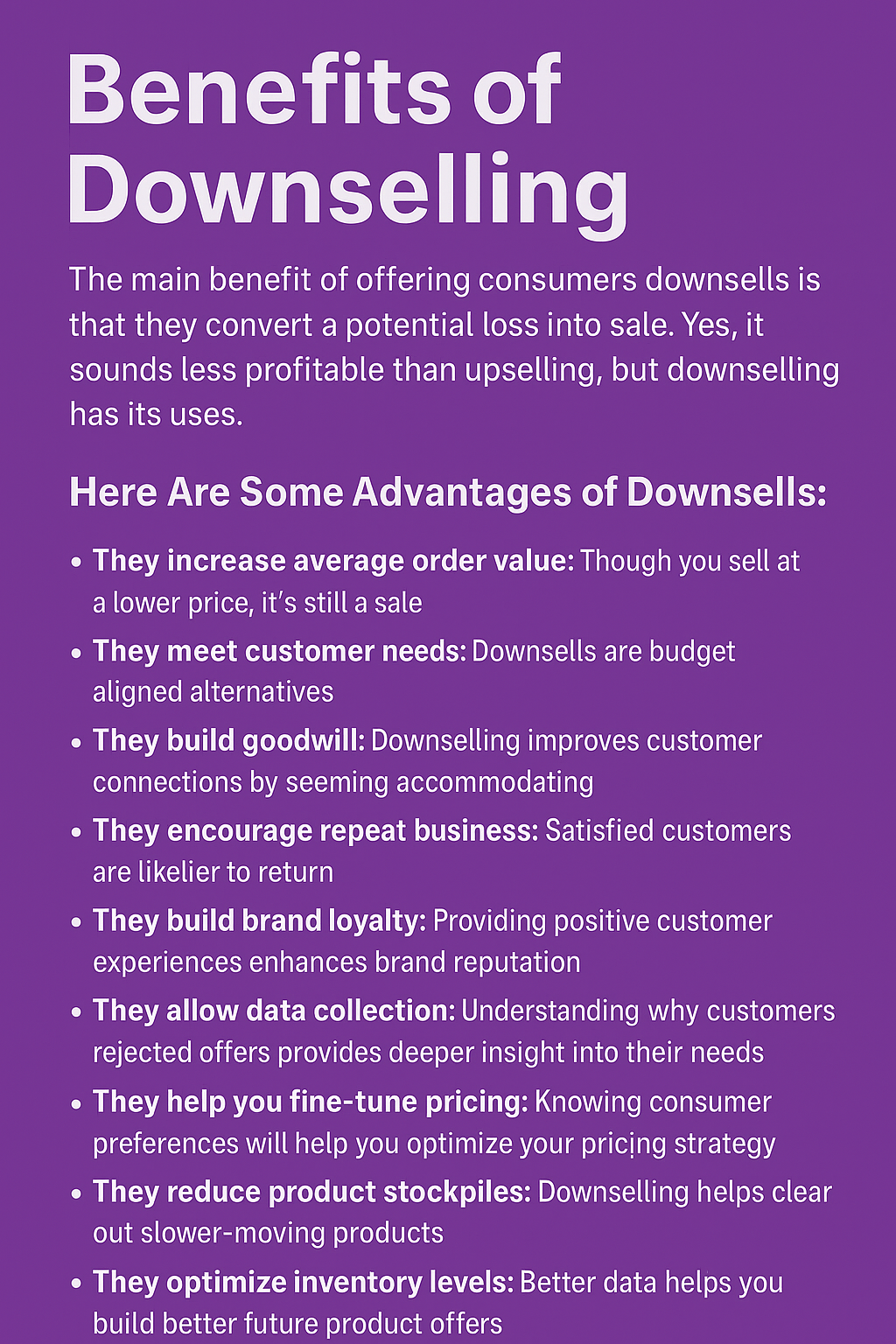
Down-Sell
Down-selling is the practice of offering customers a lower-priced or alternative product when they hesitate to complete a purchase. It’s essentially the ecommerce equivalent of the artful conversational pivot. A Shopify Merchant’s way of offering lower-priced alternatives to customers balking at a more expensive option. A “consolation prize,” with a strategic twist: instead of letting potential sales slip away, you guide your customers to a solution that meets their needs at a gentler price point. Down-sells typically appear when a customer abandons a cart, declines an upsell, or otherwise signals price resistance.
Instead of letting the sale vanish, your store presents a thoughtfully chosen alternative purchase that still meets their needs but at a more approachable price or with fewer features. Like say someone shopping their way through your online beauty supply store puts your flagship super deluxe grooming kit in their cat but hesitates at checkout. Rather than losing the sale, you down-sell by offering them your streamlined starter grooming kit. The consumer gets a bargain, and you get a new customer.
Down-sells aren’t about settling for a lower AOV. They’re meeting each prospective customer where they’re willing to spend.
Down-Selling on Shopify
-
- Stay Relevant: Offer alternative products that are closely related to the original product, not just whatever’s on sale.
- Be Timely: Trigger down-sells at conversion friendly points, e.g. at cart abandonment or after upsells are declined.
- Emphasize Value: Highlight what makes the down-sell the smart choice, whether it’s price, simplicity, or popularity.
- Automate Carefully: Use Shopify’s native functionality or apps to deliver down-sells smoothly, without disrupting the shopping experience.
- Review Results: Track which down-sells convert best and refine your approach accordingly.
Down-Sells vs. Upsells
The tactics are typically enabled by the same platform features or third-party party apps, so there is some confusion, but the difference is pretty simple. If down-selling is offering a more affordable product when the preferred product is a financial stretch, upselling is inviting customers to purchase complimentary products. Both play a role in maximizing revenue and customer satisfaction. Both strategies help Shopify merchants maximize revenue, but down-sells shine when the original offer is out of reach.